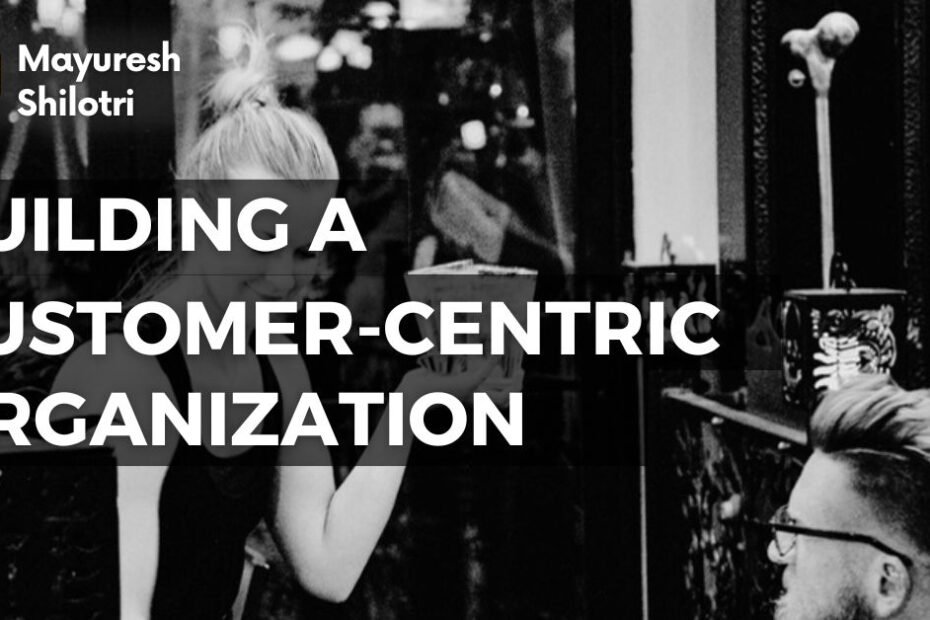The customer-centric approach is a business philosophy that places the customer at the core of an organization’s strategy, operations, and decision-making processes. This paradigm shift from product-centric to customer-centric thinking emphasizes understanding customer needs, preferences, and behaviors. Companies that adopt this approach recognize that their success hinges on delivering exceptional value and experiences to their customers.
By prioritizing customer satisfaction, businesses can foster loyalty, enhance brand reputation, and ultimately drive profitability. At its essence, a customer-centric approach requires organizations to view their products and services through the lens of the customer. This means not only understanding what customers want but also anticipating their future needs.
For instance, companies like Amazon have excelled in this area by leveraging data analytics to predict purchasing behaviors and preferences. By analyzing past purchases and browsing history, Amazon can recommend products that align with individual customer interests, thereby enhancing the shopping experience and increasing sales. This proactive stance is a hallmark of customer-centricity, as it demonstrates a commitment to meeting and exceeding customer expectations.
Key Takeaways
- Understanding the Customer-Centric Approach:
- Customer-centric approach focuses on meeting the needs and preferences of the customers.
- It involves understanding the customer journey and providing personalized experiences.
- Creating a Customer-Centric Culture:
- A customer-centric culture requires alignment of values, behaviors, and processes towards customer satisfaction.
- It involves empowering employees to prioritize customer needs and fostering a customer-focused mindset.
- Implementing Customer-Centric Strategies:
- Customer-centric strategies involve tailoring products, services, and communication to meet customer demands.
- It requires a deep understanding of customer behavior and preferences to drive business decisions.
- Empowering Employees to Deliver Exceptional Customer Service:
- Empowered employees are essential for delivering exceptional customer service and building strong relationships.
- It involves providing training, support, and autonomy to employees to make customer-focused decisions.
- Utilizing Data and Feedback to Drive Customer-Centric Decisions:
- Data and feedback are crucial for understanding customer needs and making informed business decisions.
- It involves leveraging customer insights to continuously improve products, services, and experiences.
Creating a Customer-Centric Culture
Establishing a customer-centric culture within an organization is crucial for the successful implementation of a customer-centric approach. This culture must permeate every level of the organization, from top management to frontline employees. Leadership plays a pivotal role in fostering this environment by modeling customer-focused behaviors and making it clear that customer satisfaction is a priority.
When leaders consistently communicate the importance of the customer experience, it sets the tone for the entire organization. Moreover, creating a customer-centric culture involves empowering employees to take ownership of the customer experience. This can be achieved through training programs that emphasize the significance of empathy, active listening, and problem-solving skills.
For example, Zappos, an online shoe and clothing retailer, is renowned for its exceptional customer service. The company invests heavily in employee training, encouraging staff to go above and beyond to meet customer needs. This commitment to service excellence not only enhances employee morale but also translates into positive customer interactions, reinforcing the organization’s customer-centric ethos.
Implementing Customer-Centric Strategies

To effectively implement a customer-centric approach, organizations must develop and execute strategies that align with their commitment to customer satisfaction. One effective strategy is the personalization of products and services. By tailoring offerings to meet individual customer preferences, businesses can create more meaningful connections with their audience.
For instance, Netflix utilizes sophisticated algorithms to analyze viewing habits and recommend content tailored to each user’s tastes. This level of personalization not only enhances user engagement but also fosters loyalty as customers feel understood and valued. Another critical strategy is enhancing the omnichannel experience.
Customers today interact with brands across various platforms—be it in-store, online, or through mobile applications. A seamless omnichannel experience ensures that customers receive consistent messaging and service regardless of how they engage with the brand. Companies like Starbucks have successfully implemented this strategy by integrating their mobile app with in-store experiences.
Customers can order ahead through the app, earn rewards points, and receive personalized offers based on their purchase history. This cohesive approach not only improves convenience but also strengthens the overall customer relationship.
Empowering Employees to Deliver Exceptional Customer Service
Empowering employees is a cornerstone of delivering exceptional customer service in a customer-centric organization. When employees feel trusted and valued, they are more likely to take initiative in addressing customer needs and resolving issues effectively. This empowerment can be achieved by providing employees with the necessary tools, resources, and authority to make decisions on behalf of the customer.
For example, Ritz-Carlton hotels empower their staff to spend up to $2,000 per guest to resolve any issues or enhance their experience without needing managerial approval. This level of autonomy enables employees to respond swiftly to customer needs, creating memorable experiences that foster loyalty. Additionally, fostering a culture of recognition and appreciation can significantly enhance employee motivation and performance.
When employees are acknowledged for their contributions to customer satisfaction, it reinforces their commitment to delivering exceptional service. Companies like Southwest Airlines exemplify this practice by celebrating employees who go above and beyond for customers through various recognition programs. By creating an environment where employees feel valued for their efforts in serving customers, organizations can cultivate a workforce that is dedicated to upholding high standards of service.
Utilizing Data and Feedback to Drive Customer-Centric Decisions
In today’s data-driven landscape, leveraging data and feedback is essential for making informed decisions that align with customer needs and preferences. Organizations can collect valuable insights through various channels such as surveys, social media interactions, and direct feedback mechanisms. Analyzing this data allows businesses to identify trends, pain points, and opportunities for improvement in their offerings.
For instance, companies like Apple regularly solicit feedback from customers regarding product features and usability, which informs future product development and enhancements. Moreover, utilizing data analytics can help organizations segment their customer base more effectively. By understanding different customer personas and their unique preferences, businesses can tailor marketing strategies and product offerings accordingly.
For example, Spotify employs data analytics to create personalized playlists for users based on their listening habits. This not only enhances user satisfaction but also encourages continued engagement with the platform. By making data-driven decisions that prioritize customer preferences, organizations can strengthen their customer-centric approach.
Building Strong Customer Relationships

Building strong relationships with customers is fundamental to achieving long-term success in a customer-centric environment. Trust and loyalty are cultivated through consistent positive interactions and meaningful engagement with customers over time. One effective way to foster these relationships is through personalized communication.
Brands that take the time to understand their customers’ preferences and communicate accordingly are more likely to create lasting connections. For instance, email marketing campaigns that address customers by name and offer tailored recommendations based on past purchases demonstrate a commitment to personalization that resonates with consumers. Additionally, organizations should prioritize transparency and authenticity in their interactions with customers.
In an age where consumers are increasingly discerning about brand values and practices, being open about business operations can enhance trust. Companies like Patagonia have built strong relationships with their customers by championing environmental sustainability and ethical practices. By aligning their brand values with those of their customers, they create a sense of community that fosters loyalty and advocacy.
Measuring and Monitoring Customer-Centric Success
To ensure the effectiveness of a customer-centric approach, organizations must establish metrics for measuring success in delivering exceptional customer experiences. Key performance indicators (KPIs) such as Net Promoter Score (NPS), Customer Satisfaction Score (CSAT), and Customer Effort Score (CES) provide valuable insights into how well a company meets customer expectations. Regularly monitoring these metrics allows businesses to identify areas for improvement and track progress over time.
Furthermore, qualitative feedback from customers can complement quantitative metrics by providing deeper insights into their experiences. Conducting regular focus groups or interviews can uncover specific pain points or areas where customers feel underserved. For example, companies like Airbnb actively seek feedback from both hosts and guests to refine their platform and enhance user experiences continually.
By combining quantitative data with qualitative insights, organizations can develop a comprehensive understanding of their performance in delivering customer-centric experiences.
Adapting to Changing Customer Needs and Expectations
The landscape of consumer behavior is constantly evolving due to technological advancements, cultural shifts, and changing societal norms. As such, organizations must remain agile in adapting to these changes to maintain a customer-centric focus. Regularly assessing market trends and staying attuned to emerging consumer preferences is essential for staying relevant in today’s competitive environment.
For instance, during the COVID-19 pandemic, many businesses had to pivot quickly to accommodate changing consumer behaviors—such as increased demand for online shopping and contactless services. Moreover, fostering a culture of innovation within the organization can facilitate adaptability in response to changing customer needs. Encouraging employees at all levels to contribute ideas for improving products or services can lead to creative solutions that resonate with customers.
Companies like Tesla exemplify this approach by continuously iterating on their electric vehicles based on user feedback and technological advancements. By embracing change as an opportunity rather than a challenge, organizations can position themselves as leaders in delivering exceptional value to their customers amidst evolving expectations. In conclusion, adopting a customer-centric approach requires a multifaceted strategy that encompasses understanding customer needs, creating a supportive culture, implementing effective strategies, empowering employees, utilizing data-driven insights, building strong relationships, measuring success, and adapting to change.
Organizations that prioritize these elements are better equipped to thrive in an increasingly competitive marketplace while fostering lasting loyalty among their customers.



